Don't wanna be here? Send us removal request.
Photo

DESIGN: SOCIETY & CULTURE
‘DESIGNING NATIONAL IDENTITIES AND NEW ATTITUDES TO IMMIGRATION’
BY ALBIE CHAMBERS
2 notes
·
View notes
Photo
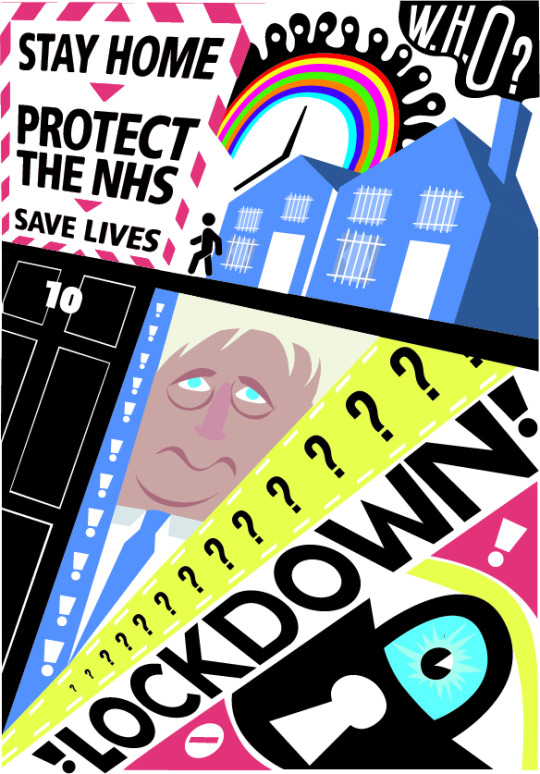
Lockdown illustration by @albiechambers-design
32 notes
·
View notes
Photo
Hauntingly beautiful. If only it were reality- an eyeopening forecast for humanity when it is without creative freedom
Follow my design blog










The metropolis of tomorrow. By Hugh Ferriss, 1929.
3K notes
·
View notes
Photo
Just do something different, I dare you.
Follow my design blog
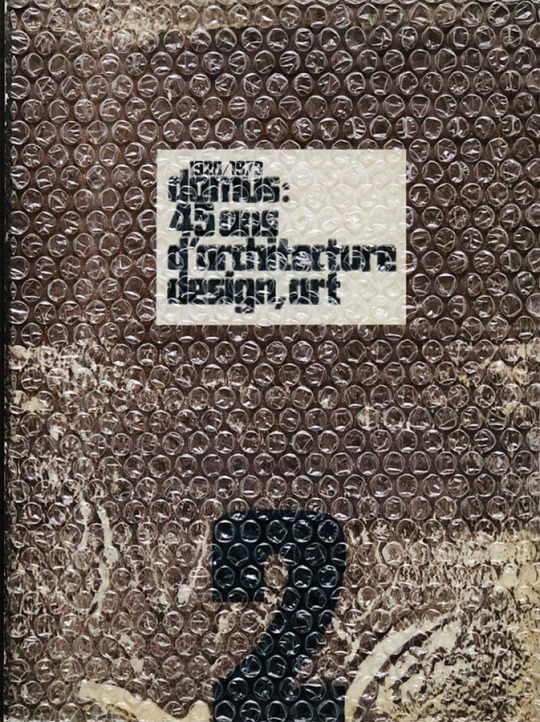

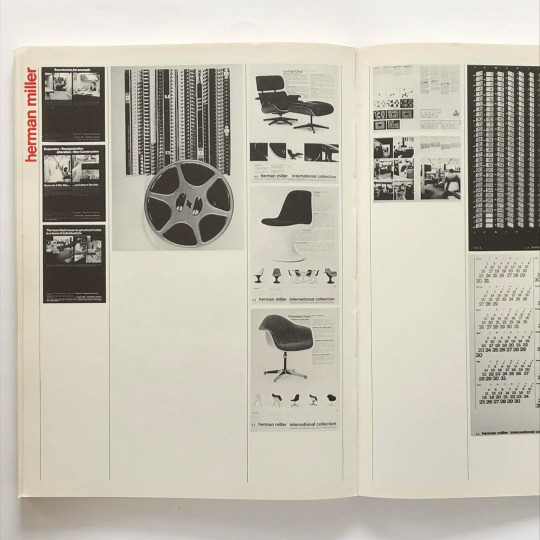
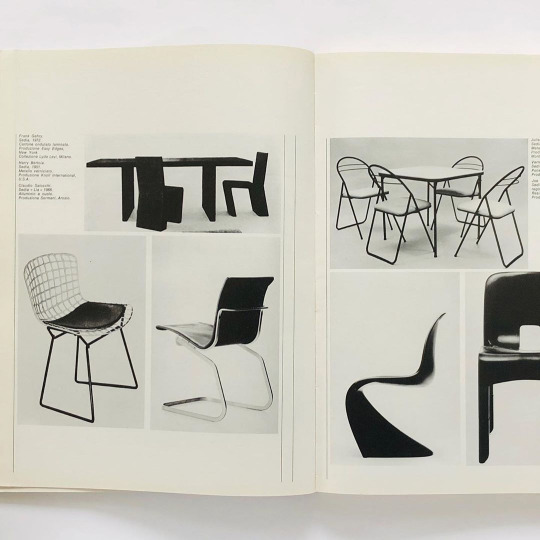

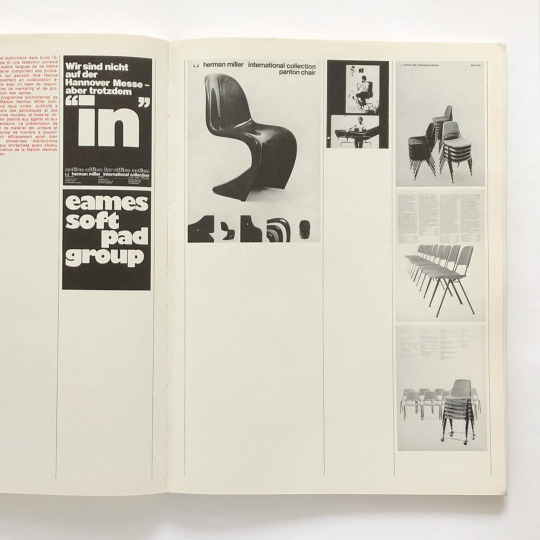

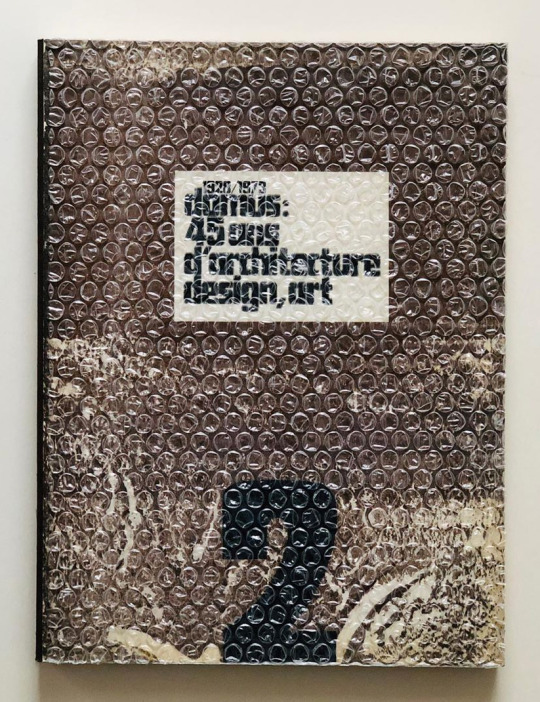
1928/1973 Domus: 45 ans d'architecture, design, art, Editoriale Domus, Milano, 1973. Published on the occasion of an exhibition at the Musée des Arts Décoratifs, Palais du Louvre, Paris, 1973. Graphic Design: Ennio Lucini
(via Hugh Miller)
123 notes
·
View notes
Photo
Contrast and curves are the best lovers.
Follow my design blog

Saul Bass Playscape, 1961
Taken from the Graphis 97 article, “The World Around Them”
211 notes
·
View notes
Photo
The square is the most powerful shape.
Follow my design blog
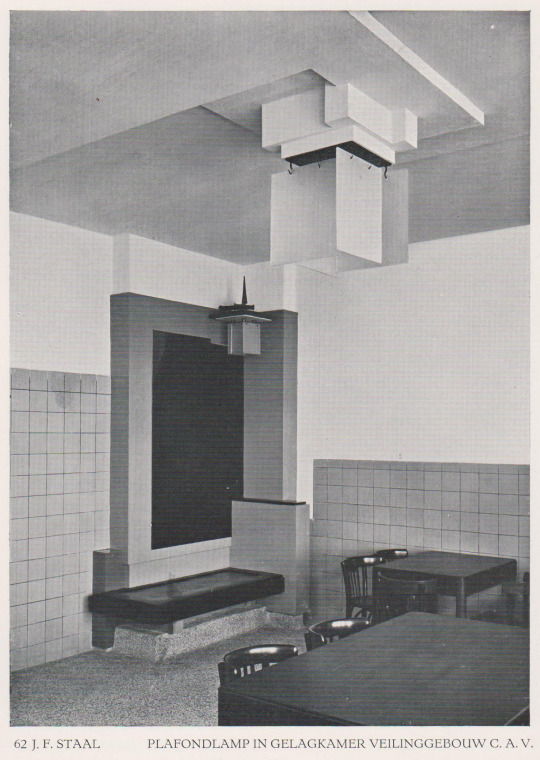
Ceiling lamp, flower auction building, Aalsmeer, J.F. Staal, circa 1927. From Uitzichten en stroomingen in de kunstnijverheid.
136 notes
·
View notes
Photo
repitition is cool

Space House, London, United Kingdom.
(Arch. George Marsh, 1964-68)
Photo by Carlos Traspaderne with Hasselblad 500 C/M & Ilford film.
604 notes
·
View notes
Photo

An introspective into death and social media profile persistence. What happens to our facebook accounts when we are gone? What is the future of the graveyard? Is this the next step of the digital world taking over our physical lives?
Ashes to e-Ashes
Follow my design blog
3 notes
·
View notes
Text
A.I. & Automation, and socialism
A true egalitarian and socalist economy could ONLY result from a fully automated work force. When the value of work is stripped away from humans and granted to robotic replacements, there will be no inbalance through inequity of pay- for we do not have to pay wages to an inanimate object.
Then we have to question the purpose of humanity after the need for labour is non-existent. What do we do with ourselves if not to earn a living? Can the human race depend upon hobbies and holidays?
Of course this whole idea is utopian and it is probably impossible to come to fruition, for there will always be those who would disagree with a robot replacing their job. But when the same robot can give you your clothes, food, build your houses, enforce policing, etc- we will have no monetary outgoings because there is no human labour value behind them anymore.
But there arises another problem: Individuality. Is it human nature that we are all different, we all want for different things. Different styles, tastes, values, beliefs. These all decide what we buy, do, and say. So why would Laura want to buy the same machined shirt when she can purchase a handmade, embroidered shirt that Adam made. And Adam doesnt want to give them away for free, as he put plenty of time and effort into his craft. But Laura can’t use any money to pay for them as the concept of money has been dissolved because of an economy provided by an A.I workforce.
It is only natural for people to return to traditional trade when the value of craftmanship returns from a rejection of the machined commodities.
However it is interesting to theorise if we can achieve socialism through replacing human labour with that of machines. What does society still need humans for when innovation ends- do we still need philosophers, designers, artists, politicians? Perhaps it would only increase the need for these professions.
I will refine my arguement
1 note
·
View note
Photo
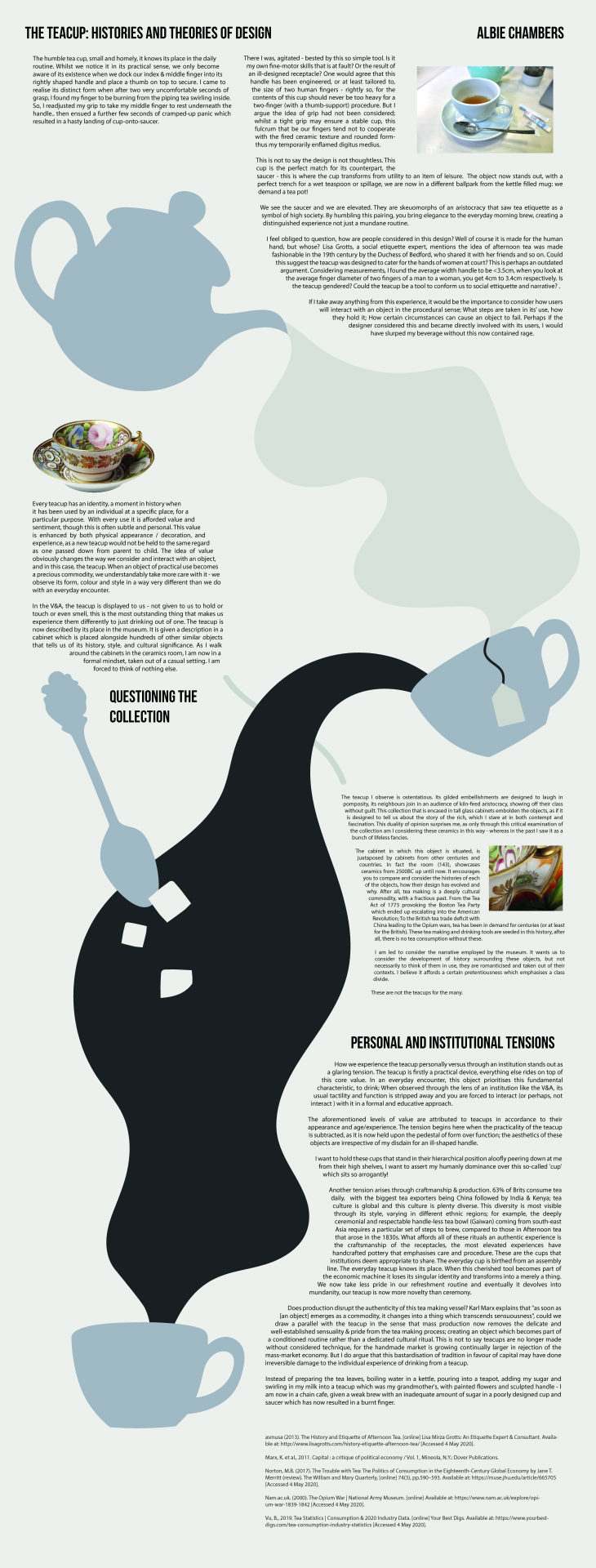
An essay looking at personal and insitutional experiences of the teacup through histories and theories of design
2 notes
·
View notes
Photo




snippets of a zine investigating a philosophy about becoming more sensitive about gentrification as designers
1 note
·
View note
Photo

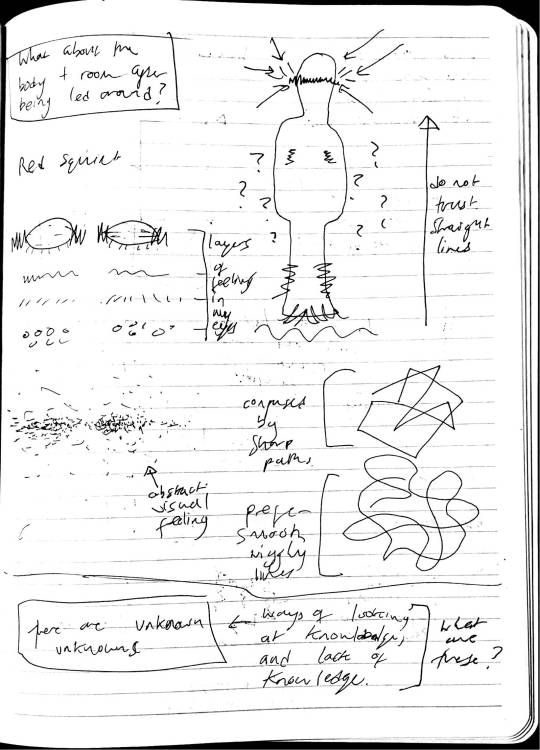
An interesting approach with notation where I first describe with just diagrams and mark making then going in afterwards with annotation.
I was investigating interpreative movement and the feeling in the body and the room after specific movements which included a guided walk while blind folded. We were attempting to describe the events through senses other than just sight.
(side note, workshop leader Emma Hoette mentioned the idea of ‘Unknown unknowns’ - fascinating as a way to interpret the in-comprehendible, alike the mantis shrimp who can see colours which we cannot actually imagine).
Question raised: ‘Where or what is the future of notation? Can there be a new form of notation that can be invented? The computer and even the typewriter as a precursor, revolutionised the way we make notes.. can this be done again? and if so, is it really necessary?’
Methinks I need more insight into different note taking techniques to answer this question, there may be ways that I discover that makes this question irrelevant to me.
1 note
·
View note
Link
Are our current note taking methods appropriate given our technological advances?
0 notes
Photo
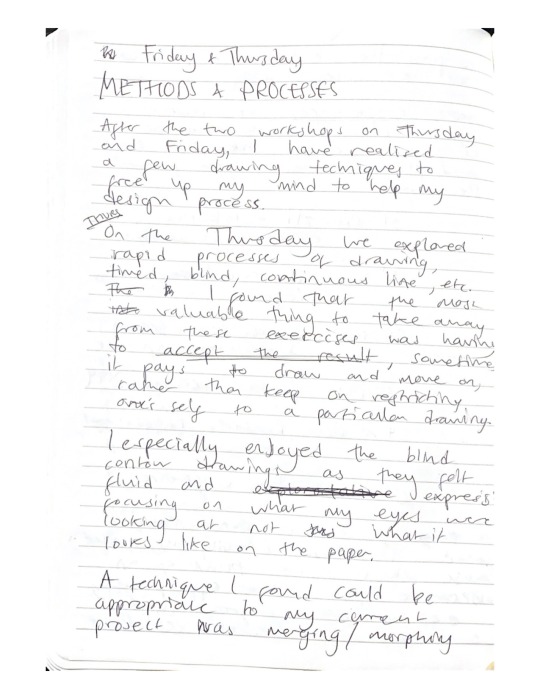
My Issue with taking notes [part 1]
Ever since I have been taught to notate and list, I have struggled with keeping meaningful and useful notes that actually remind me and engage me with a topic that I had been learning about at that time. In the moment, note taking is generative, concise, inspiring and refreshing.. then perhaps even 20 minutes later once you’ve bumped into someone you weren't expecting, or crossed a road after the lights turn red - its over, these notes are forgotten and never hold the same value as they did moments prior.
How do I take ‘meaningful notes’
I want to explore ways to expand my current methods of note taking, how I can revise my approach to be able to create quick notations that are valuable for future reading and also develop methods to go back on top of my notes to further break down what I was thinking, and where I could take them.
This is an on-going investigation.
The photo showcases my current model for notation as of this date.
1 note
·
View note
Video
youtube
A short film documentary of those who love libraries. Why are libraries under threat? Why do they need to change? and how are they changing?
by BA Design Students @ Goldsmiths, UoL
1 note
·
View note
Photo

Observing the Everyday: An encounter with a cup and saucer.
The humble tea cup, small and homely, it knows its place in the daily routine. Whilst we notice it in its practical sense, we only become aware of its existence when we dock our index & middle finger into its rightly shaped handle and place a thumb on top to secure.
I came to realise its distinct form when after two very uncomfortable seconds of grasp, I found my finger to be burning from the piping tea swirling inside. So, I readjusted my grip to take my middle finger to rest underneath the handle.. then ensued a further few seconds of cramped-up panic which resulted in a hasty landing of cup-onto-saucer.
There I was, agitated - bested by this so simple tool. Is it my own fine-motor skills that is at fault? Or the result of an ill-designed receptacle? One would agree that this handle has been engineered, or at least tailored to, the size of two human fingers - rightly so, for the contents of this cup should never be too heavy for a two-finger (with a thumb-support) procedure. But I argue the idea of grip had not been considered; whilst a tight grip may ensure a stable cup, this fulcrum that be our fingers tend not to cooperate with the fired ceramic texture and rounded form- thus my temporarily enflamed digitus medius.
This is not to say the design is not thoughtless. This cup is the perfect match for its counterpart, the saucer - this is where the cup transforms from utility to an item of leisure. The object now stands out, with a perfect trench for a wet teaspoon or spillage, we are now in a different ballpark from the kettle filled mug: we demand a tea pot!
We see the saucer and we are elevated. They are skeuomorphs of an aristocracy that saw tea etiquette as a symbol high society. By humbling this pairing, you bring elegance to the everyday morning brew, creating a distinguished experience not just a mundane routine.
I feel obliged to question, how are people considered in this design? Well of course it is made for the human hand, but whose? Lisa Grotts, a social etiquette expert, mentions the idea of afternoon tea was made fashionable in the 19th century by the Duchess of Bedford, who shared it with her friends and so on. Could this suggest the teacup was designed to cater for the hands of women at court? this is perhaps an outdated argument. Considering measurements, I found the average width handle to be <3.5cm, when you look at the average finger diameter of two fingers of a man to a woman, you get 4cm to 3.4cm respectively. Is the teacup gendered? I digress.
If I take away anything from this experience, it would be the importance to consider how users will interact with an object in the procedural sense; What steps are taken in its’ use, how they hold it, how certain circumstances can cause an object to fail. Perhaps if the designer considered this and became directly involved with its users, I would have slurped my beverage without this now contained rage.
Albie Chambers
1 note
·
View note